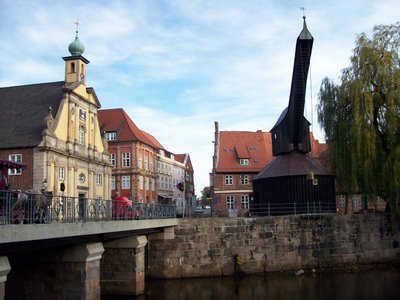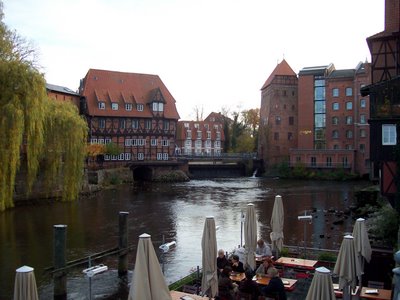Historic Medieval Port



At the heart of Lueneburg's medieval prosperity is being able to ship out on water its precious commodity of salt. In one of the oldest parts of the city, several early port buildings and facilities remain. At this point, part of the Ilmenau river is diverted through the city to provide for the harbor.
At top above is the medieval crane, a crane that has become a recognizable symbol of Lueneburg in much the same way that the Roebling bridge is a symbol of Cincinnati, or the mine headframes are a symbol of Butte, or the smokestack a symbol of Anaconda. It would lift pallets of salt off the shore and onto waiting boats. Behind it and in fuller view at bottom is an old salt warehouse. An interesting touch that does not come through in the photo is that the weather vane is a symbol of the boats that used to ply these waters. The photo in the middle shows other buildings lining the waterfront, most of which date to the medieval or renaissance era. The larger building on the left, for example, was building that held the offices of many who were tied to the salt business. In the foreground, you can see tables from a restaurant. Restaurants and bars or kniepen now line the quayside where sailors once walked. Nearby is the church of St. Nickolai, known as the sailors's church.

0 Comments:
Post a Comment
<< Home